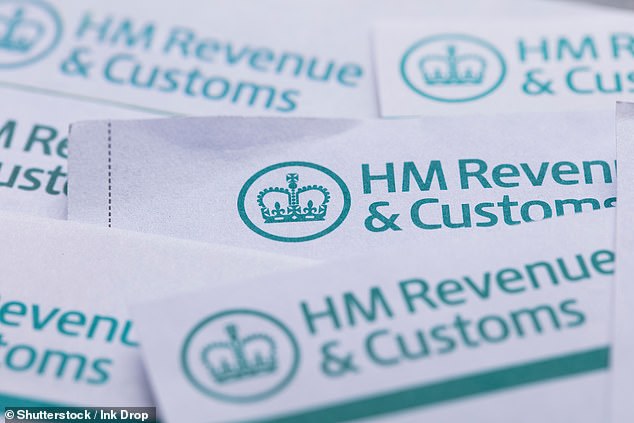- HMRC said its telephone and postal services remain “below (its) service standards”
- But he urged more taxpayers to “help themselves” and go online
HM Revenue & Customs has admitted that its customer service levels for taxpayers using telephone or mail to contact it remain “below (its) service standards”.
HMRC said an increase in the number of taxpayers and a higher proportion of people with complicated queries had affected its postal and telephone services.
In the 2022 to 2023 financial year, HMRC said it improved the proportion of mail it delivered within 15 days to 72.7 per cent, up from 45.5 per cent the previous year.
In its latest performance update, HMRC said more taxpayers could “help themselves” by using its online services.
Below average: HM Revenue & Customs said its telephone and postal services remain poor
The proportion of callers who wanted to speak to an HMRC adviser over the phone and were able to do so averaged 71.4 per cent between October and December 2023.
While admitting it needs to do more to improve its telephone and postal services, HMRC said there was “more scope for our customers to help themselves” by using its online services.
It said: ‘More than 3 million phone calls we received between 2022 and 2023 concerned just three things that can be easily done online: resetting a password, getting your PAYE tax code and finding your national insurance number. The equivalent of 500 advisors are needed to respond to those calls.
‘It means that those people who really need to speak to an HMRC adviser – including those with complex queries, the digitally excluded and the particularly vulnerable – may struggle to get the help they need.
“The only way we can achieve those service levels for customers who really need to talk to us is by further improving and expanding our digital and online services and continuing to direct more people to use them.”
HMRC aims to reduce the volume of telephone and postal contact by taxpayers by 30 per cent by the end of 2025, compared to levels seen at the end of 2022.
In the 2022 to 2023 financial year, HMRC collected £788.8 billion in taxes, representing a 10.2 per cent increase on the previous year.
HMRC said taxpayers’ money “is spent by the Government on schools, the NHS, the police and other essential services we all depend on”.
HMRC claimed its compliance work secured £34 billion in tax revenue during the period, which would otherwise have been lost to the exchequer due to errors, fraud and other forms of non-compliance.
He added: “We are focused on offering a modern and efficient service that makes it easier to pay taxes and harder to make a mistake.”
“That means improving guidance and improving and expanding our digital services – online through Gov.uk and via the app – to give customers the quick and easy ways to manage their tax affairs they expect.”
According to HMRC, between January and December 2023 there were 80 million logins to the HMRC app by 3.3 million unique users, marking a login growth rate of more than 70 per cent compared with the previous year.
It stated that ‘digital assistant interactions’ increased from 1.9 million in 2022 to 2023 to 4.8 million so far from 2023 to 2024.
This is Money has been charting the problems of taxpayers struggling to contact HMRC or facing hefty unexpected tax bills.
Service levels suffered a drastic drop during the pandemic.
A Public Accounts Committee report published last year found that handling of posts and calls had decreased significantly during the pandemic.
Between 2021 and 2022, HMRC responded to 39.5 per cent of posts within 15 days, compared to 70.3 per cent the previous year.



